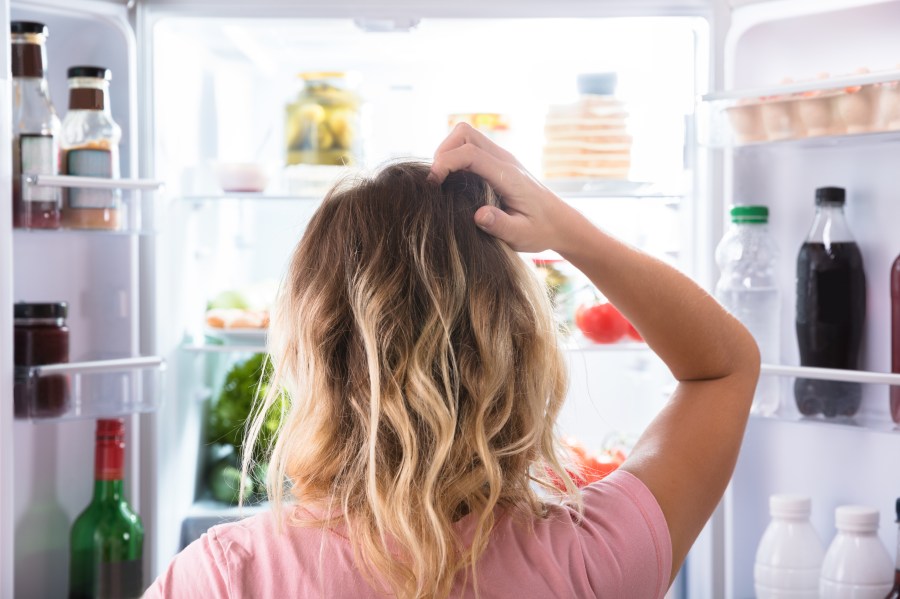Is There an Easy Desiccant for a Mini Fridge

Smart refrigerators from major manufacturers like Samsung can automatically keep food cool based on the latest cutting-edge technology. If you have an older refrigerator, however, you might have to set the temperature yourself and adjust it frequently in order to ensure the food inside is kept cool enough.
If you don't set the temperature cold enough, food on the shelves furthest from the freezer might slowly begin to go bad, especially if you have stored it there for a long time. Food that needs the lowest possible temperatures includes milk, cheese, and other dairy products. Insufficiently cold temperatures will spoil the food before you can eat it. To mitigate this, you need to adjust the temperature settings for your refrigerator.
Adjusting the Refrigerator Thermostat Correctly
The right thermostat setting for a fridge is somewhere between 32 degrees and 40 degrees Fahrenheit. At temperatures higher than 40 degrees, you run the risk of perishables going bad with you none the wiser.
At the same time, keeping your refrigerator too cold is not always the best way to take care of your food. If the interior is too cold, your beverages and other liquids will be half-frozen when you take them out. This is not a problem in the hot summer months, but in the cold winter time, drinking a half-frozen soda can be a bit of a pain. Set the thermostat around 35 degrees Fahrenheit to strike a balance.
Your freezer, on the other hand, should always be frozen, so it can preserve meat and other food. A good temperature for the freezer is 0 Fahrenheit or lower. This keeps food frozen, and inhibits the growth of bacteria or mold.
Sometimes, despite you setting the fridge or freezer thermostat on the coldest settings, the fridge simply loses its ability to stay cold, let alone keep food sufficiently preserved. This typically happens with very old refrigerators that are near the end of their useful life. However, a number of factors can harm the fridge's cooling abilities.
If the door seal on your refrigerator is letting air seep into the unit, the refrigerator will warm up slightly than the temperature it is supposed to be at. This can happen if a tear or vent occurs in the door seal.
A second problem that occurs is with the fridge coils in the back or underneath the unit. These need to be free of clogging to allow smooth air circulation. There might also be a malfunction with the compression system inside the refrigerator, or the coolant might be leaking.
Getting Your Warm Fridge Fixed
Coolant leaks and other technical fridge malfunctions can be dangerous to repair yourself so you need to disconnect the refrigerator and call in a repair professional. In addition, you might have to purchase replacement parts for aged or damaged parts.
If your refrigerator needs repairs or parts, first check the manufacturer's warranty to determine what support might be available for fixes. If your unit is relatively new, you might be able to get the full cost of repair covered for you, especially if you bought it from a big brand name maker.
Fridge repairs range anywhere from $200 to over $300, depending on the fix. You can find a local repairman by checking with big electrical suppliers near you.
Fridge Care and Scheduled Checks
To improve your refrigerator's performance and ensure it works for a long time to come, follow these suggestions. First, make sure not to leave the refrigerator's doors ajar. Leaving the doors open for extended periods lets out cool air from the refrigerator.
Make sure you clean the fridge regularly and wipe spills promptly. This avoids the spreading of bacteria through your fridge. At least once a year, bring in an expert to check the fridge for leaks and other malfunctions. A fridge maintenance check will cover things like thermostat, condenser, and electrical inspection.
Throw Out Food That Has Been Improperly Refrigerated
Be careful of eating food that has been improperly refrigerated, as it could have developed poisonous bacteria. If you have meat in the fridge, for example fish, insufficiently cold temperatures will make it go bad very fast. Some foods that quickly develop bacteria include:
- Fish
- Meat
- Seafood
- Cooked eggs
- Cooked Beans
- Baked beans that have been exposed to air
If you've discovered these and related foods having begun to spoil, don't take chances. Even a spoonful of such food can cause severe stomach sickness or worse. Just toss the spoiling food in the trash. This way, you keep the whole family safe.
Source: https://www.life123.com/home-garden/how-to-keep-your-refrigerator-at-the-right-temperature?utm_content=params%3Ao%3D740009%26ad%3DdirN%26qo%3DserpIndex&ueid=722c3153-f5e9-43e3-a54f-daac9db8f8fe